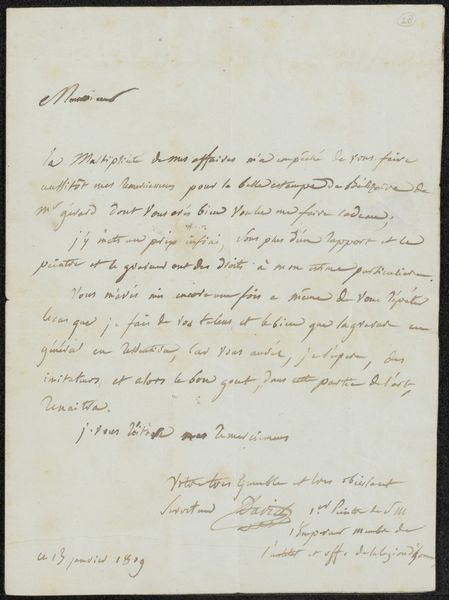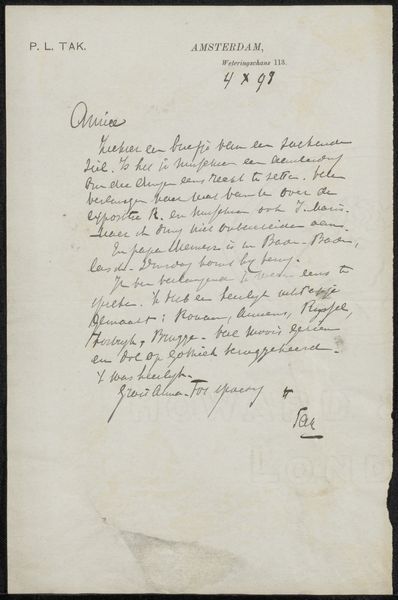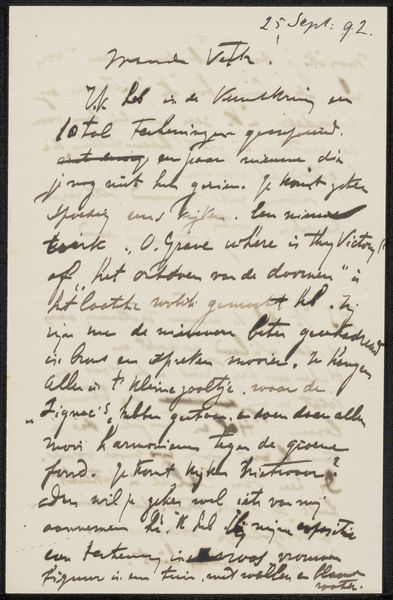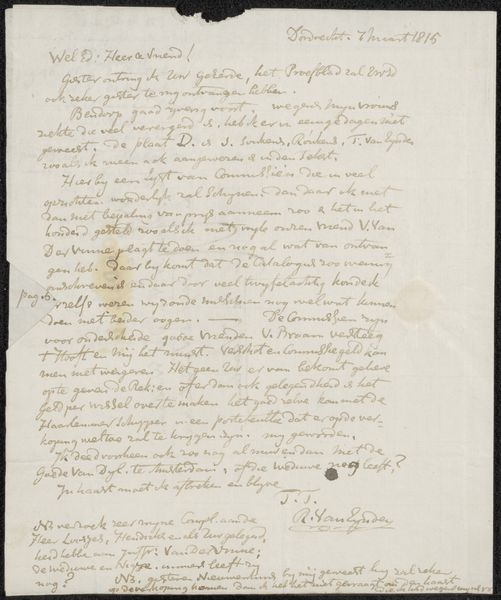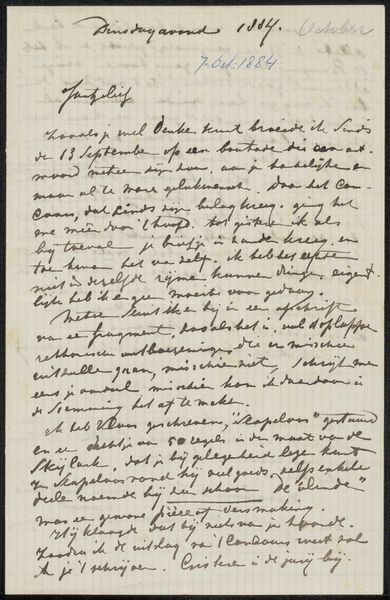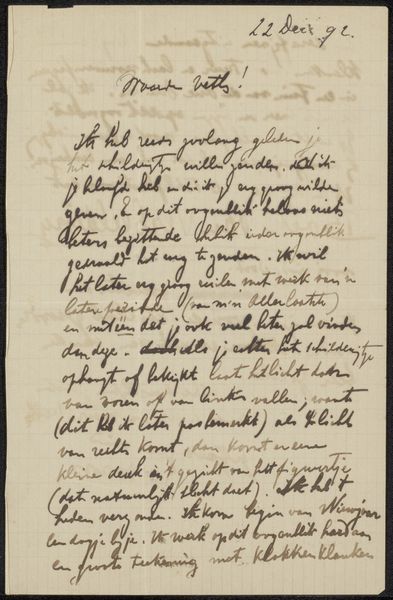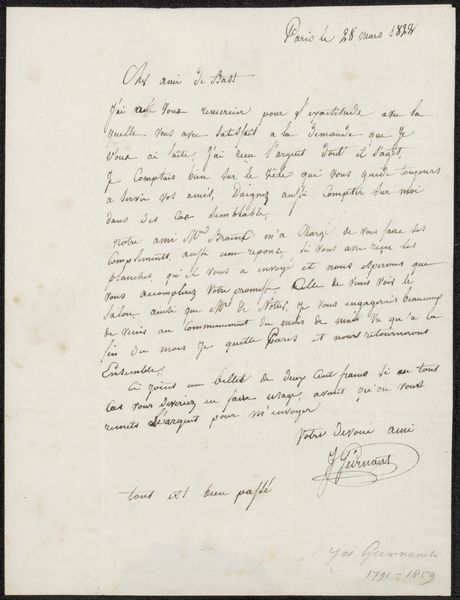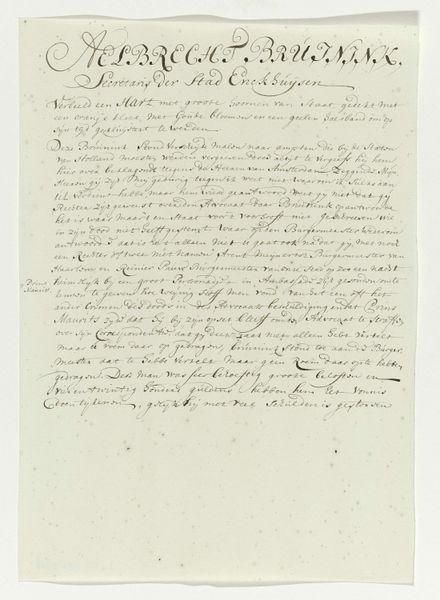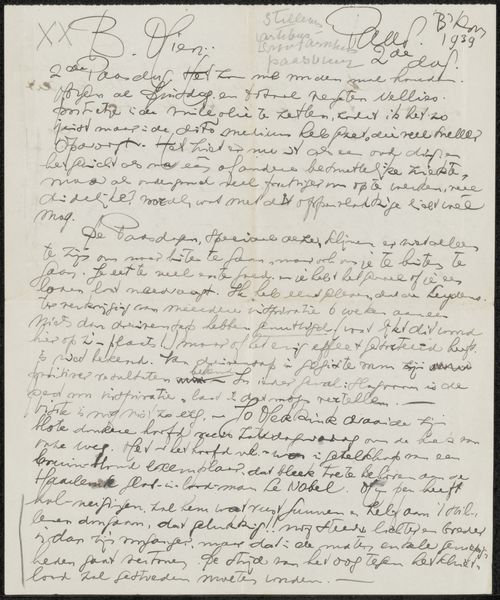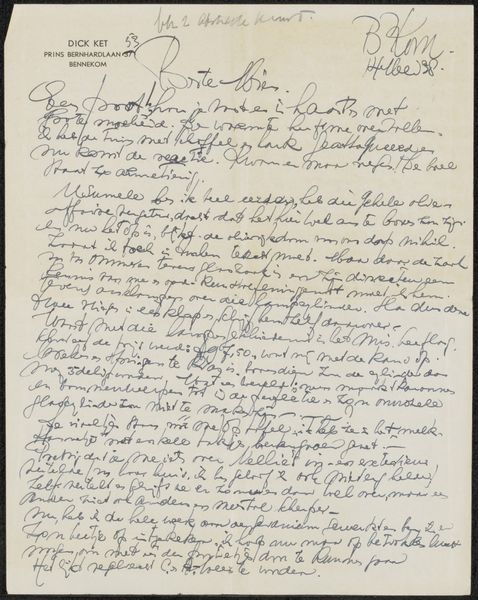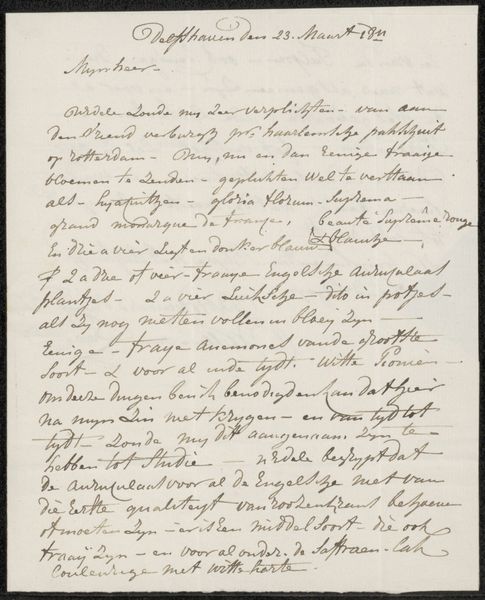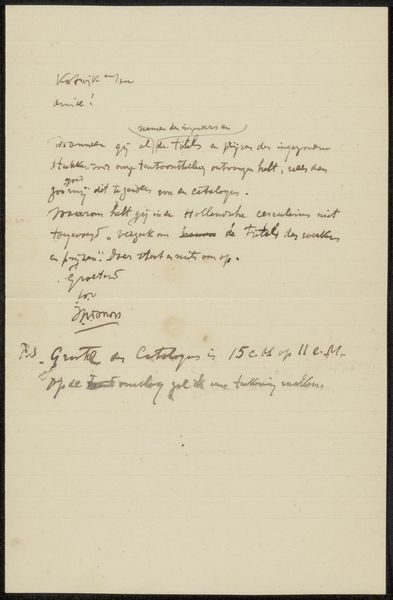
drawing, paper, ink, pen
#
drawing
#
paper
#
ink
#
pen
#
history-painting
#
calligraphy
Dimensions: height 156 mm, width 134 mm
Copyright: Rijks Museum: Open Domain
Curator: Standing before us is a work from between 1835 and 1839, "Facsimile Text by Johannes Elzevier," currently held at the Rijksmuseum. Crafted with pen, ink, and paper, it's a striking example of calligraphic art, doubling as a piece of historical record. What catches your eye initially? Editor: It feels like eavesdropping on someone's personal thoughts, doesn't it? A whisper from the past. The script is beautiful, but there’s something about seeing handwriting—a person’s actual hand at work—that feels incredibly intimate. Almost melancholic, in a way. Curator: Absolutely. The elegance of the lettering is deceiving. The piece is rooted in history painting and tells the story from 1697 onward, reflecting a deep dive into familial origins and marriage. You almost feel that you know Elzevier by the way he has written his words on the paper. Editor: So, more than just aesthetics; it’s about cultural memory. It makes you wonder about the symbolic importance of handwriting itself. Each loop, each stroke carries echoes of cultural tradition and familial connection. It’s like a visual family tree in itself. Curator: Precisely. And in terms of symbols, notice how the flourishes emphasize the dates, underscoring key events, and creating anchors in time. Each phrase tells a different segment in Elzevier's own personal journey through marriage, or, what appears to be, the death of a relative. Editor: I find myself tracing the lines, and there is also something in the weight of the ink on the page; and the choice of tools – simple, humble. I am seeing that translated into feelings of humility and resilience that this family has carried through the ages. Curator: Considering its existence as a facsimile, there’s an intriguing layer here. It presents both reverence for history and its imperfect replication. Editor: Yes, the act of replication itself becomes part of the narrative. Almost a yearning to capture and hold onto a moment that's already gone. Curator: Thinking about this from the Iconographer point of view has given me insight into what Elzevier was experiencing. The weight of that in that present, now far away. Editor: Indeed. What appears to be a reproduction transforms into a powerful exploration into ourselves and what is at the center of us: families.
Comments
No comments
Be the first to comment and join the conversation on the ultimate creative platform.
